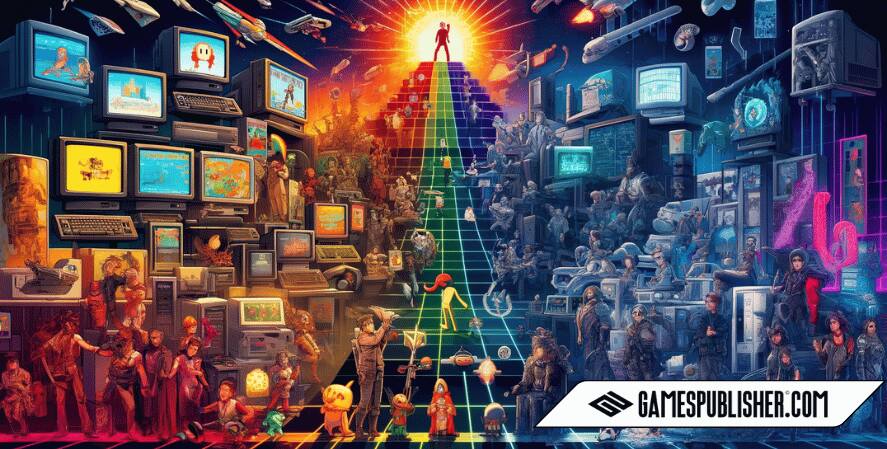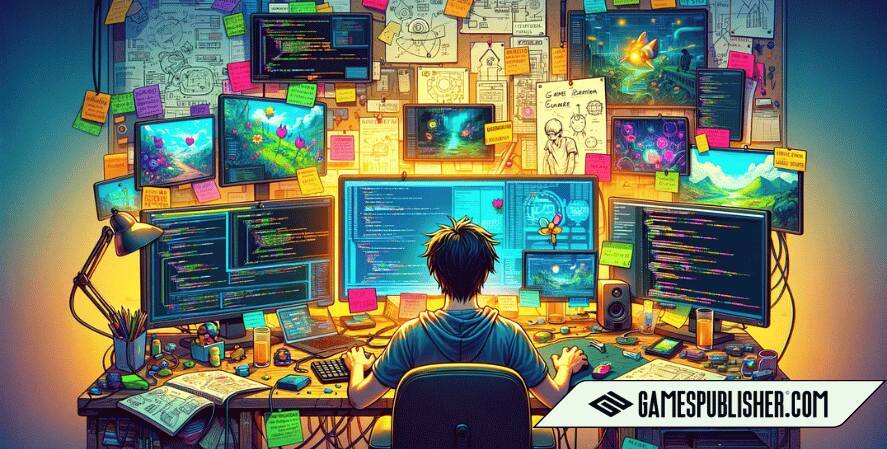Welcome to Gamespublisher.com, your premier portal into the vast world of video gaming. Here, we dedicate ourselves to exploring every corner of the gaming universe, with a particular emphasis on nurturing knowledge across various sectors, including the vibrant indie gaming scene.
The indie sector, with its boundless creativity and innovative spirit, is a testament to what is possible when developers venture beyond the traditional pathways of the gaming industry.
Importance of Indie Games
Indie games play a crucial role in the gaming world, serving as a hotbed for innovation and creativity.
Free from the constraints typically imposed by major publishers, indie developers are able to explore unique themes, gameplay mechanics, and storytelling techniques that often challenge the status quo.
This freedom not only enriches the gaming landscape but also pushes the entire industry forward, inspiring both players and developers alike.
Definition of Indie Games
What are Indie Games?
Indie games are video games developed by individuals or small teams without the financial and technical support of large publishers.
These games emphasize creative freedom, offering developers a chance to express their personal vision fully.
Often developed with lower budgets and by smaller teams, indie games are distinguished by their innovative and diverse gameplay, as well as their focus on artistic expression.
Characteristics
Key characteristics of indie games include:
- Creative Freedom: Less constrained by commercial pressures, allowing for more experimental and risky content.
- Smaller Budgets: Typically operate on more modest budgets compared to major studio projects.
- Smaller Teams: Development teams can range from solo developers to small groups, fostering a more personal touch in the game’s development.
History of Indie Games

Origins
The indie game movement began gaining traction in the late 1990s and early 2000s, as advances in technology made game development more accessible.
Key moments, like the release of “Cave Story” in 2004 and “Braid” in 2008, have significantly shaped the indie game scene, proving that games developed outside traditional systems could achieve critical and commercial success.
Impact on the Gaming Industry
Indie games have profoundly influenced mainstream gaming culture, from inspiring new genres to introducing innovative gameplay mechanics that have been adopted by larger studios.
They have also helped democratize game development by proving that successful games can be made with limited resources.
Development Process of Indie Games

Conceptualization
The process often starts with a simple idea or a unique concept, which indie developers explore more freely, without the immediate pressure of market trends. This phase is crucial as it sets the foundation for the creative direction of the game.
Development Challenges
Despite their creative freedom, indie developers face numerous challenges:
- Budget Constraints: Funding their projects can be difficult without significant capital.
- Limited Resources: Smaller teams must often wear multiple hats, from design to marketing.
- Market Competition: Standing out in a saturated market can be daunting.
Development Tools and Platforms
Popular tools for indie development include Unity and Unreal Engine, which offer robust features suitable for limited budgets. Distribution platforms like Steam, Itch.io, and console-specific e-shops are critical for reaching audiences.
Marketing and Distribution

Strategies
Effective marketing strategies for indie games often involve leveraging social media, engaging with gaming communities, and participating in game conventions and indie festivals to build hype and gain visibility.
Distribution Channels
Digital storefronts like Steam and Itch.io are vital, providing platforms where indie games can be easily accessed by a global audience without the need for physical distribution.
Success Stories
Case Studies
Games like “Stardew Valley” and “Hollow Knight” have become standout successes in the indie industry, beloved for their deep gameplay and distinctive aesthetics, which have resonated strongly with players worldwide.
Lessons Learned
These success stories underscore the importance of passion and persistence, as well as the necessity of connecting with your audience through genuine and engaging content.
Conclusion
The indie gaming scene is a dynamic and integral part of the broader game development landscape, continually pushing the boundaries of what games can be.
For aspiring indie developers out there, remember: your unique vision and relentless pursuit of that vision can indeed redefine what games are capable of.
Embrace your creativity, for it is your greatest asset in the journey of indie game development.

